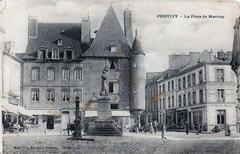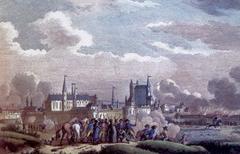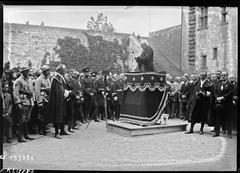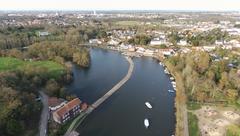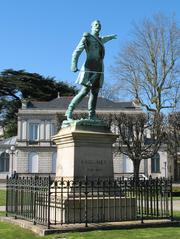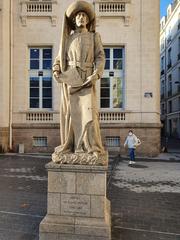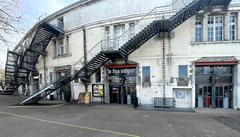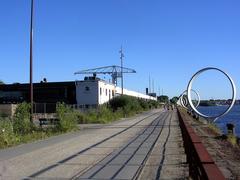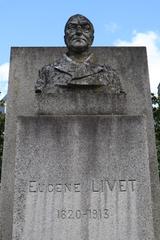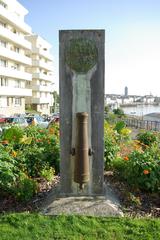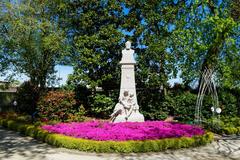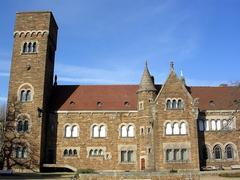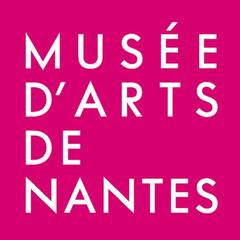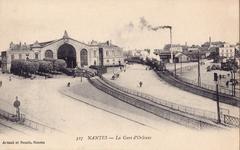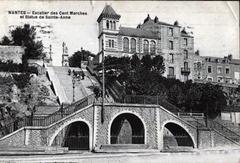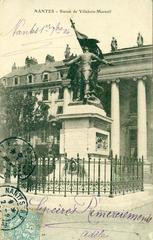Château de la Persagotière: Visiting Hours, Tickets, and Nantes Historical Sites Guide
Date: 14/06/2025
Introduction
Château de la Persagotière stands on the southern bank of the Loire River in Nantes’ Saint-Jacques district. Rich in history, architectural charm, and community spirit, this 19th-century estate has evolved from a private residence to a pioneering educational institution and, more recently, a cherished urban park. Whether you are a history enthusiast, architecture aficionado, or a traveler keen to explore Nantes’ cultural treasures, this guide presents a comprehensive overview—covering the château’s history, architectural highlights, cultural significance, visiting hours, ticketing, accessibility, and practical tips for your visit.
For the most current details and event notifications, consult official Nantes tourism resources and local heritage organizations (Airelle Editions; CAUE Observatoire; Nantes Métropole; Official Nantes Tourism Website).
Table of Contents
- Origins and Early History
- Architectural Evolution
- Institutional and Cultural Significance
- Notable Events and Recent Developments
- Visitor Information
- Accessibility
- Guided Tours and Events
- Cultural and Environmental Contributions
- Frequently Asked Questions (FAQs)
- Plan Your Visit
- References
Origins and Early History
The estate’s origins trace back to August 1856, when it was acquired to serve as the new home for the École des sourds-muets de Nantes, a school for deaf youth (Airelle Editions). The site comprised a central manor and two orangeries—one converted into a chapel by Brother Louis, a foundational figure in its early development. The move addressed space constraints in the city center and provided a setting conducive to both residence and education.
Architectural Evolution
19th-Century Expansion
Responding to the school’s growth, two substantial wings were added in the 1880s, with further extensions in the early 20th century. These additions accommodated both deaf and visually impaired students and marked the estate as a leader in special education. By WWII, the façade extended over 180 meters, set within a landscaped 4.5-hectare park (Archives Nantes).
20th-Century Modernization
The estate underwent continual modernization: a new chapel was inaugurated in 1902; workshops and dormitories were added through the 1920s–1960s, reflecting a growing commitment to comprehensive care and vocational training. Recent decades have focused on careful heritage conservation, with the château and chapel now protected as key elements of Nantes’ built environment (CAUE Observatoire).
Institutional and Cultural Significance
Pioneering Education
For nearly 150 years, the Brothers of Saint-Gabriel managed the institution, fostering innovative education for deaf and visually impaired youth. The château became a beacon for inclusive education, combining academic and vocational instruction with community engagement (Archives Nantes).
Community and Alumni Engagement
The alumni association, founded in 1920, nurtured lifelong connections. The estate’s central location and accessibility by tram reinforced strong community ties. Today, the park and gardens remain vital green spaces, with recent urban projects enhancing access and public enjoyment (Nantes Métropole).
Notable Events and Recent Developments
The estate’s leadership, particularly Brothers Louis, Privat, and Lemesle, guided its adaptation to changing educational and social needs. The château weathered both World Wars, serving as a refuge and symbol of resilience. In the 21st century, the estate has been further integrated into the city’s green infrastructure, with the inauguration of new public gardens in 2023 (CAUE Observatoire; Nantes Métropole).
Visitor Information
Visiting Hours and Admission
- Park and Gardens: Open daily during daylight hours; free access.
- Château Interior: Not open for regular visits; accessible only during special events, heritage days, or guided tours. Check the official Nantes tourism website for dates.
- Ticketing: Park access is free. Some guided tours or events may require advance booking and a nominal fee.
Location and Access
- Address: Château de la Persagotière, Saint-Jacques, Nantes, France
- Public Transport: Tram line to route de Clisson stop; bus lines serve the area (Trek Zone)
- Parking: Limited street parking; public transport is recommended.
- View on Google Maps
Accessibility
Recent urban redevelopment has improved accessibility, with level pathways, ramps, and open entrances for pedestrians, cyclists, and those with mobility challenges (NantesImmo9). While the park and gardens are largely accessible, historic interiors may have limitations; contact the Nantes tourism office for specific inquiries.
Guided Tours and Events
- Guided Tours: Offered during European Heritage Days and select events; advance registration required.
- Events: The estate regularly hosts community festivals, art exhibitions, open-air concerts, and seasonal activities—especially during “Le Voyage à Nantes” (Le Voyage à Nantes Official Website).
- Educational Programs: Collaborations with schools and universities provide workshops and interpretive experiences.
Cultural and Environmental Contributions
Château de la Persagotière is a hub for local arts, heritage, and environmental stewardship. The estate’s parklands enhance Nantes’ urban biodiversity and community gardening initiatives. Art exhibitions, craft fairs, and culinary events celebrate the region’s traditions, while the dovecote and former dairy recall its agricultural past (Wikipedia; Mémoire Nantes Sud).
Frequently Asked Questions (FAQs)
Q: What are the opening hours?
A: The park and gardens are open during daylight hours; château interior access is limited to special tours and events.
Q: Is there an entrance fee?
A: Park access is free; guided tours or special events may have a fee.
Q: Is the site wheelchair accessible?
A: The park and gardens are accessible; interior access may be limited.
Q: How do I buy tickets for events or tours?
A: Purchase on the official Nantes tourism website or on-site during event days.
Q: Are guided tours available?
A: Yes, during heritage days and special events, with advance registration.
Q: What nearby sites can I visit?
A: Château des ducs de Bretagne, Machines de l’île, Passage Pommeraye, and the Jardin des Plantes are all within easy reach.
Plan Your Visit
- Best Time: Spring and summer for peak greenery; autumn for quieter visits.
- What to Bring: Comfortable shoes, camera, and check weather forecasts.
- Dining: No on-site cafes, but the Saint-Jacques district offers many dining options.
- Family-Friendly: Open lawns and riverside walks are ideal for families; supervision recommended near water.
For real-time updates, download the Audiala app and follow Nantes tourism on social media for the latest about Château de la Persagotière and citywide cultural events.
References and Further Reading
- Airelle Editions – Château de la Persagotière
- CAUE Observatoire – Institut de la Persagotière
- Nantes Métropole – Les Jardins de la Persagotière
- Official Nantes Tourism Website
- Archives Nantes – Quartiers
- NantesImmo9 – Domaine Persagotière
- Wikipedia – Institut La Persagotière
- Mémoire Nantes Sud – Chapelle de la Persagotière
- Le Voyage à Nantes Official Website
- Hikersbay Château de la Persagotière
- Nantes Tourism Official Site
